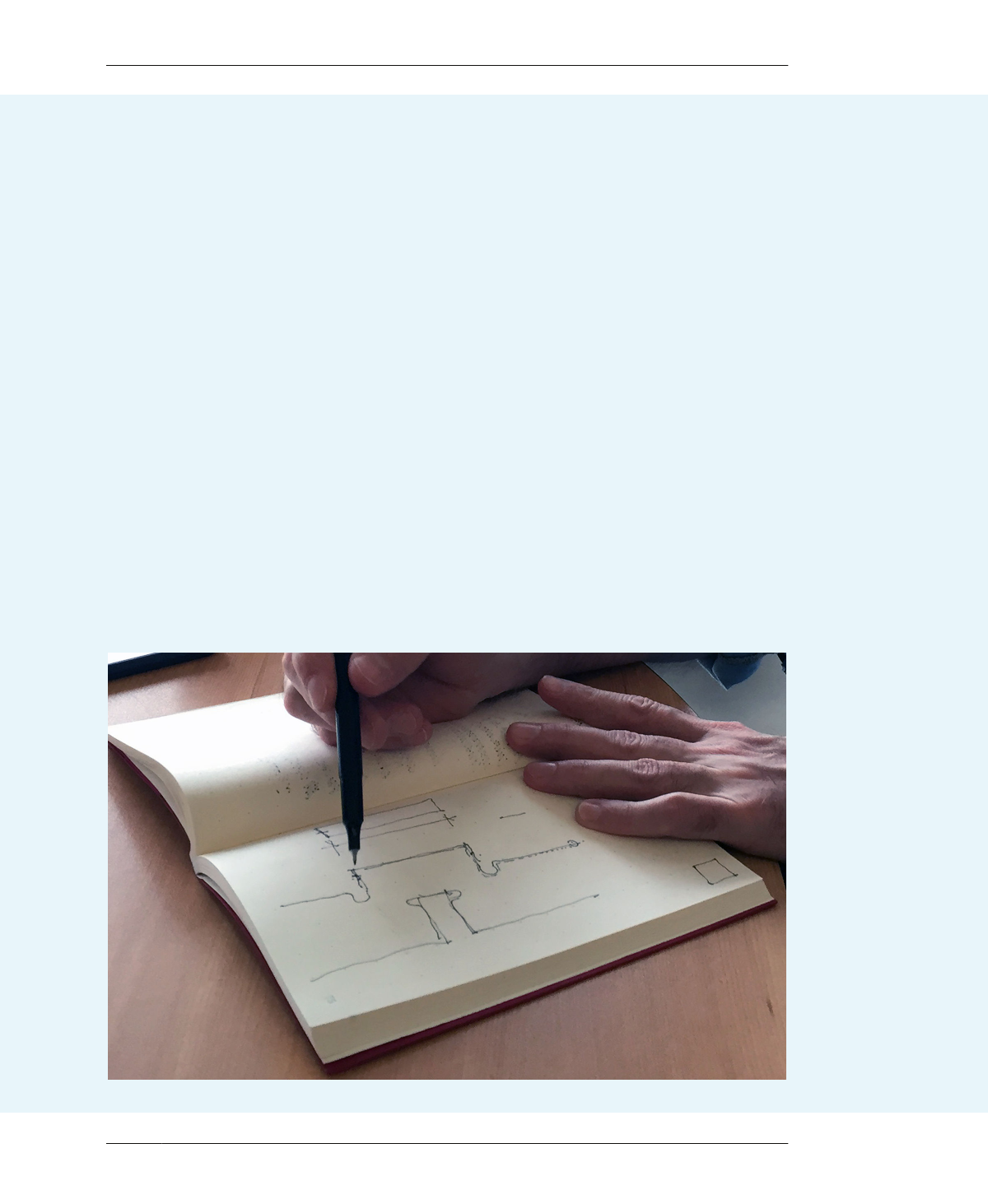
DESIGN DEVELOPMENT: JOINERY
DIFFERENT MODES OF THINKING—DON’T GET STUCK!
In the process of designing a project, you will
find yourself moving through different kinds of
thinking. As you work through the design pro-
cess, it is useful to become aware of how your
mindset shifts over the course of working on
your project.
Sometimes, you are trying to imagine or invent
a thing that doesn’t yet exist; other times, you
might be modifying a part, but finding that it’s
not yet as it should be. Occasionally, you’ll have
to resolve a design to handle structural criteria,
material efficiency, and ergonomics. Then at
other times, you may have to incorporate new,
unanticipated requirements into the design.
During the process, you might also find yourself
carrying out rudimentary drawing tasks, in
order to thoroughly implement an idea across
the entire design. Similarly, you might also run
into repetitive and possibly mundane efforts,
like keeping your layering conventions straight
or organizing components.
Alternating between different tasks and kinds
of thinking can be an advantage for the creative
process. If you’re frustrated by a challenging
problem to solve, give the problem-solving part
of your brain a rest and instead spend time
working on repetitive tasks. Alternating the
kinds of thinking can be restful or rejuvenating
so that you can approach broader design nego-
tiations with a “full well.”
By alternating kinds of thinking with your mood
and energy levels, you’ll never get stuck or
blocked.
—Gary Rohrbacher
04/GETTING STARTED WITH DESIGN
109
